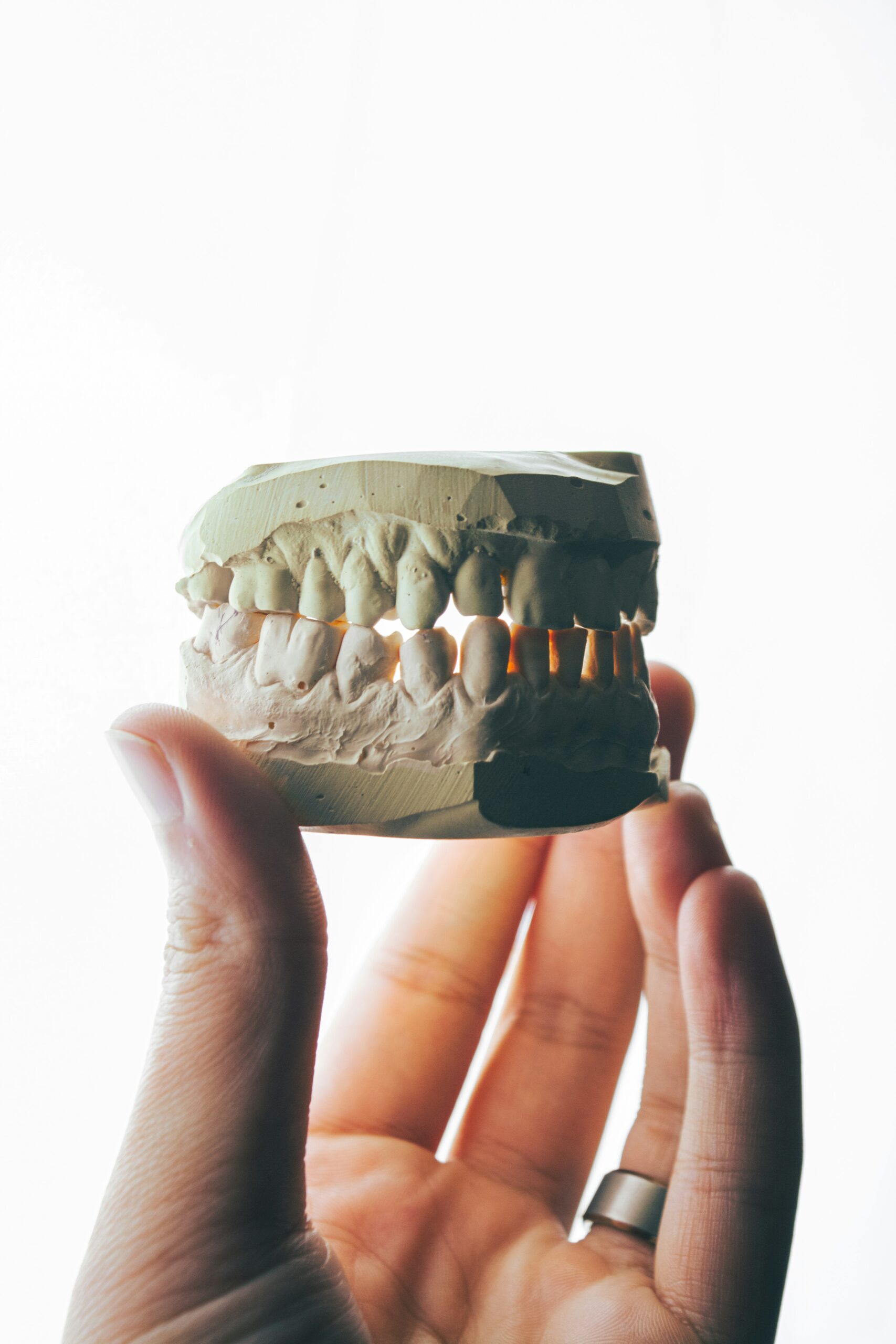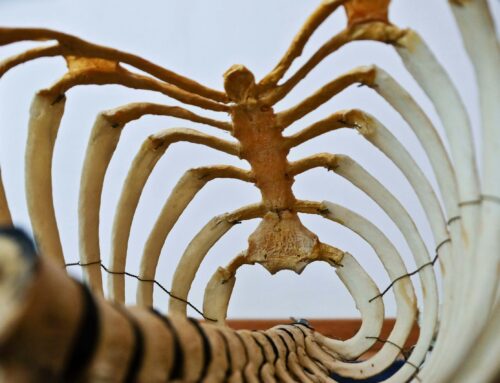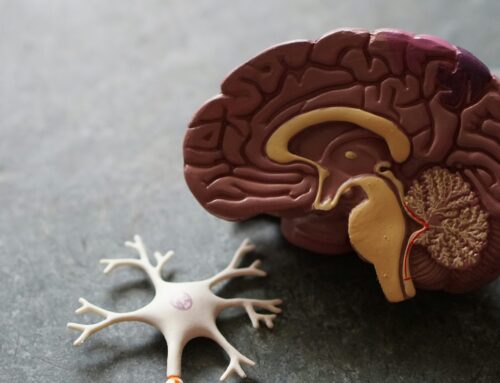Craniomandibular Dysfunction (CMD) is an umbrella term for functional and structural disorders in the temporomandibular joint (TMJ), the masticatory muscles, and related structures. It affects the interaction between the TMJ, musculature, and neural structures responsible for jaw movement and stability. CMD can have various causes, including malocclusion (improper bite alignment), muscular imbalances, and psychosocial factors like stress. The symptoms arise from imbalances in the interaction of these structures and can affect different parts of the body, including the head, neck, and shoulders.
Conditions and Symptoms
CMD presents with a variety of symptoms that can vary from patient to patient. The most common conditions are:
- Myogenic Dysfunction: This involves an overload or malfunction of the masticatory muscles, often triggered by bruxism (teeth grinding).
- Arthrogenic Dysfunction: This affects the TMJ directly, such as with inflammation or degenerative changes like osteoarthritis.
- Occlusal Dysfunction: Misalignments of the teeth and jaw malpositions that lead to an incorrect bite and affect chewing and joint function.
- Psychosocial Factors: Stress and emotional strain can increase the risk of CMD or exacerbate existing symptoms by causing muscle tension and nighttime grinding (bruxism).
Common Symptoms
CMD patients report a range of symptoms that vary depending on the severity and affected area:
- Jaw and facial pain: Frequent pain, especially in the cheeks and jaw muscles.
- Jaw joint sounds: Clicking or grinding in the TMJ when moving the jaw, often accompanied by restricted jaw movement.
- Headaches: CMD can cause tension headaches and migraine-like symptoms.
- Neck and back pain: Due to the close muscular connection between the jaw and neck, pain can radiate to the shoulders and upper back.
- Dizziness and tinnitus: Some CMD patients experience dizziness and ear ringing, which can result from the TMJ’s proximity to the inner ear.
- Restricted jaw mobility: Reduced mouth opening or jaw locking, making chewing and speaking difficult.
Prevalence and Risk Factors
CMD is relatively common in the general population, affecting about 5-12% of people. Women are more frequently affected than men, particularly between the ages of 20 and 50. Risk factors for CMD include:
- Dental or jaw misalignments
- Teeth grinding or clenching (bruxism)
- Postural imbalances in the neck and shoulder area
- Stress and psychosocial strain
- Trauma or injury to the jaw and head area
Treatment Methods for CMD
The treatment of CMD often requires an interdisciplinary approach, as several fields, including dentistry, orthodontics, physical therapy, and psychotherapy, may be involved.
- Dentist and Orthodontist: Initial diagnosis is performed, and splint therapy (e.g., bite guard) is often prescribed to relieve the bite and relax the masticatory muscles.
- Medication: Pain relievers, muscle relaxants, and anti-inflammatory drugs can help alleviate acute symptoms.
- Physical Therapy: Physical therapy to improve muscle tone, mobility, and function.
- Psychological Support: Stress management techniques and behavioral therapy are helpful for psychosomatic causes of CMD.
- Acupuncture and Alternative Methods: Some patients benefit from acupuncture or osteopathic treatments that release tension in the jaw and head area.
Physical Therapy for CMD
Physical therapy plays a central role in the treatment of CMD, particularly for improving mobility, muscle relaxation, and pain relief. Physiotherapists work to eliminate muscular imbalances and movement restrictions.
Referral Options
CMD physical therapy can be prescribed by a dentist or general practitioner, typically in the form of:
- Manual Therapy: Techniques focused on mobilizing and relieving the TMJ.
- Therapeutic Exercises: Targeted strengthening and relaxation of affected muscle groups.
- Massage Therapy: To reduce muscle tension and relieve pain in the jaw, neck, and shoulder areas.
Treatment Techniques in Physical Therapy for CMD
- Manual Therapy for the Jaw Joint: Mobilization techniques improve TMJ mobility, release adhesions and blockages, and restore the correct joint position.
- Trigger Point Treatment: The masticatory muscles are examined for tension and trigger points, which are specifically treated through manual pressure techniques.
- Muscle Training and Stretching: Exercises focus on strengthening and relaxing the muscles around the TMJ. Especially effective are exercises to stretch the masticatory muscles and mobilize the jaw.
- Posture Training and Correction: Imbalances in the neck and back musculature affect TMJ function. Specific exercises and postural correction reduce muscle tension.
- Exercises for Mouth Opening: Exercises for controlled mouth opening help improve jaw mobility and correct imbalances.
- Heat and Cold Therapy: Applying heat or cold promotes relaxation and can alleviate inflammatory symptoms.
Prognosis and Recovery Chances
The prognosis for CMD patients is generally positive, especially with early diagnosis and treatment. Physical therapy can significantly alleviate CMD symptoms and improve the quality of life for many patients. However, lasting relief often requires long-term therapy, including learning self-care exercises and regular follow-ups. For psychosocial causes, combined therapy with psychological support may improve long-term recovery chances. Overall, CMD can be well-managed if treatment is individualized and patients actively participate in their therapy.
Self-Care at Home
Relaxation Exercises and Stress Reduction:
Since stress often contributes to muscle tension in the jaw, relaxation exercises such as breathing techniques, progressive muscle relaxation, or meditation are helpful. Mindfulness exercises can reduce nighttime teeth grinding. If necessary, relaxation techniques can be learned via an app or online courses.
Jaw Exercises to Improve Mobility:
Place the fingertips of both hands on the front teeth and slowly open the mouth by gently applying downward pressure with your fingers. Hold the position for 5-10 seconds, then relax. This exercise improves jaw mobility and stretches the masticatory muscles. Alternatively, lateral shifting exercises can help: Place two fingers on the lower jaw and gently move it sideways without blocking or clicking. Another exercise is tongue positioning: Gently place the tongue against the palate and slowly open the mouth without releasing the tongue. This exercise promotes relaxed jaw movement.
Self-Massage of the Masticatory Muscles:
For the masticatory muscles (masseter), place the fingers on the jaw angles, where the jawbone is widest, and massage in small circular motions. To the temple muscles (temporalis), place your fingers on your temples and massage from the center of the temple toward the hairline. And for the neck muscles, perform circular massages in the neck area.
Heat Treatments:
Heat can promote blood circulation and relieve tension. Place a warm cherry stone pillow or warm towel on the jaw area and relax for about 10–15 minutes.
Jaw Joint Relief in Daily Life:
Keep the mouth relaxed and avoid chewing gum, as it can strain the jaw muscles.
Stretching Exercises for Neck and Shoulders:
Regular stretching exercises, such as gently pulling the head to the side or tilting it forward, can relieve tension in the neck muscles and support overall posture.
Summary
CMD patients can significantly contribute to relieving and relaxing the jaw muscles at home through targeted exercises and self-massages. These measures should be integrated into the daily routine for long-term success. Self-care exercises improve jaw mobility, reduce tension, and enhance general well-being, especially when practiced regularly and combined with professional physical therapy.







Leave A Comment